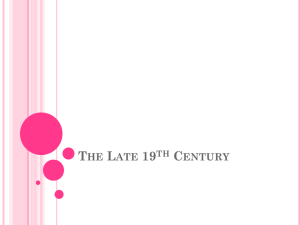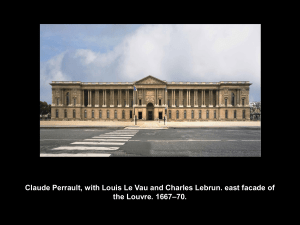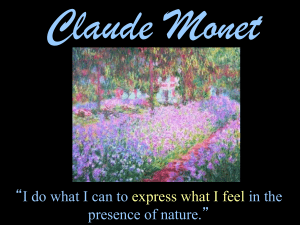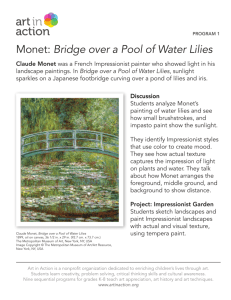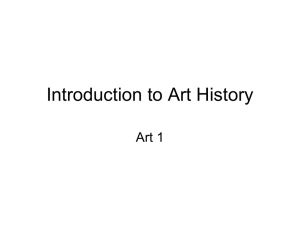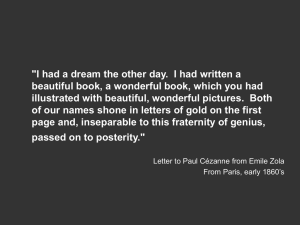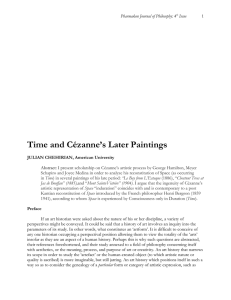Research point: Look at artists who worked in series in the
advertisement
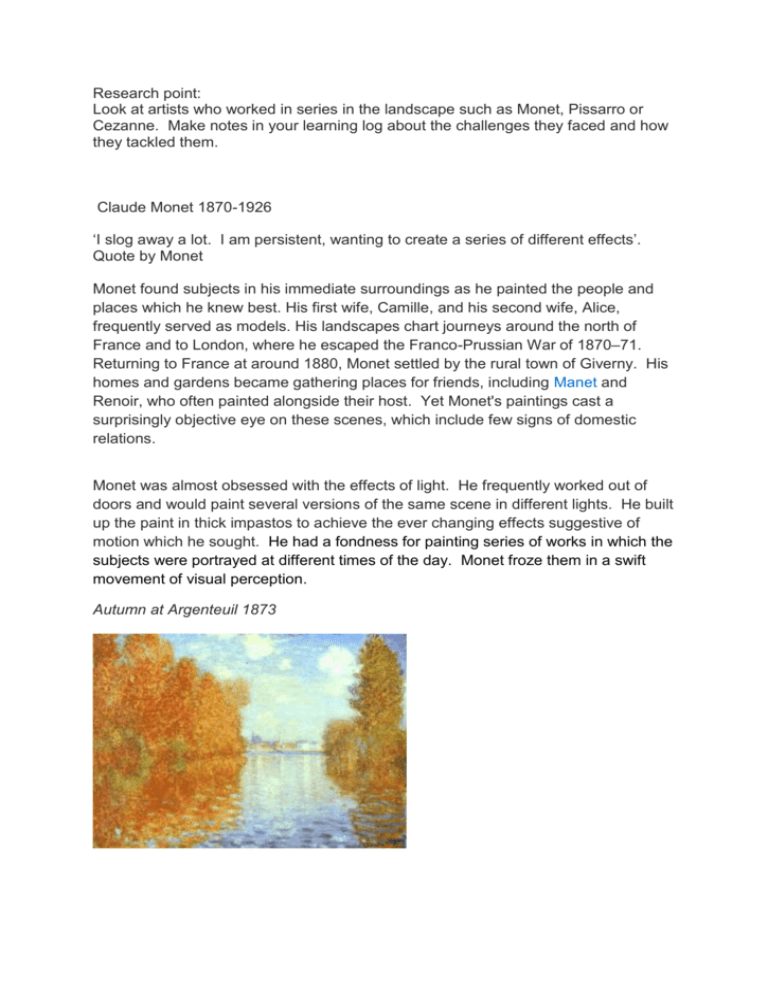
Research point: Look at artists who worked in series in the landscape such as Monet, Pissarro or Cezanne. Make notes in your learning log about the challenges they faced and how they tackled them. Claude Monet 1870-1926 ‘I slog away a lot. I am persistent, wanting to create a series of different effects’. Quote by Monet Monet found subjects in his immediate surroundings as he painted the people and places which he knew best. His first wife, Camille, and his second wife, Alice, frequently served as models. His landscapes chart journeys around the north of France and to London, where he escaped the Franco-Prussian War of 1870–71. Returning to France at around 1880, Monet settled by the rural town of Giverny. His homes and gardens became gathering places for friends, including Manet and Renoir, who often painted alongside their host. Yet Monet's paintings cast a surprisingly objective eye on these scenes, which include few signs of domestic relations. Monet was almost obsessed with the effects of light. He frequently worked out of doors and would paint several versions of the same scene in different lights. He built up the paint in thick impastos to achieve the ever changing effects suggestive of motion which he sought. He had a fondness for painting series of works in which the subjects were portrayed at different times of the day. Monet froze them in a swift movement of visual perception. Autumn at Argenteuil 1873 This impressionist painting superbly captures the effect of the sun, low in the sky, on the gold coloured Haystacks: End of the summer 1891. He was concerned here with painting the air and light at a given moment. Paul Cézanne 1839 – 1906 ‘Nature does not lie on the surface but hides in the depth, through colours whose depths are revealed on the surface – they rise up from the roots of the world.’ Quote by Cézanne. Cézanne was disappointed with the lack of formal consideration in the work of his impressionist contemporaries. His theory that all forms in nature are based on the cone, the sphere and the cylinder gained him the reputation of being “the father of modern painting”. He saw and interpreted the scene in front of him in these terms. He worked on location in the hills around Aix-en-Provence in southern France, using impressionist colour, but he was also influenced by Poussin and the classical tradition in art. Mountains in Provence 1885 The Provençal landscape provided the subject matter for hundreds of Cézanne’s paintings and Mountains in Provence is a perfect summary of the preoccupations and achievements of Cézanne at the beginning of his maturity. Cézanne’s concern to give expression to the qualities of the landscape was always balanced by an equal concern for the language of painting and harmony. His approach aimed not to ‘represent’ but to compose, to build his composition in a solid structure. He was fascinated with structure and the way painting can tackle nature. His work can summon up a broad range of sensations for the viewer. By using colour and space, Cézanne obtained a superb degree of expressiveness. Camille Pissarro 1830-1903 “Blessed are they who see beautiful things in humble places where other people see nothing.” Quote by Camille Pissarro The French impressionist, Camille Pissarro, was a key figure in the history of Impressionism. He experimented with the theories of colour devised by pointillist Georges Seurat. Camille Pissarro was born on July 10 on the Caribbean island of St. Thomas. After spending his childhood in the Danish colonies in the West Indies, Pissarro ran away to Venezuela to dedicate himself to art. In 1855, his father finally agreed for him to train in Paris where he met the future impressionists. He then developed his own personal style which was less interested in the changes in light and the sky than in the geometrical structure of the landscape. He aimed to capture the sensations of nature whilst retaining the lightness and purity of the colour. With sons Ludovic-Rodolphe, Lucien,and Félix in Knocke, Belgium,1894. Country Girl Making a Fire 1887 - 1888 His long life (1830-1903) allowed him to develop his painting. During the first twentyfive years of his life, he mainly painted landscapes. Red roofs, Corner of the Village , Effect of Winter 1877 His capacity for enthusiasm and his love of nature and bright observation around him, Pissarro was able to paint scenes of unforgettable beauty. To conclude, apart from working directly from the environment, Monet, Pissarro and Cézanne’s principal revolutionary development was in their use of colour. They used colour more purely and brightly than their predecessors. For example, they saw that the shadows in nature are not simple the neutrals, black or grey, but blue, violet and dark green. They were the rebels of their time and not afraid to experiment with new ideas.

